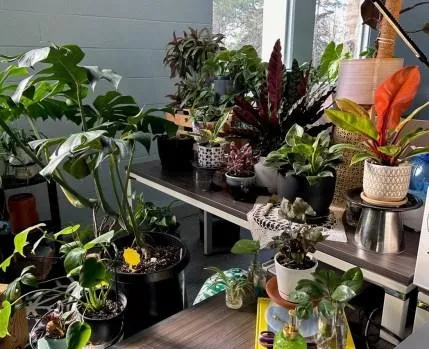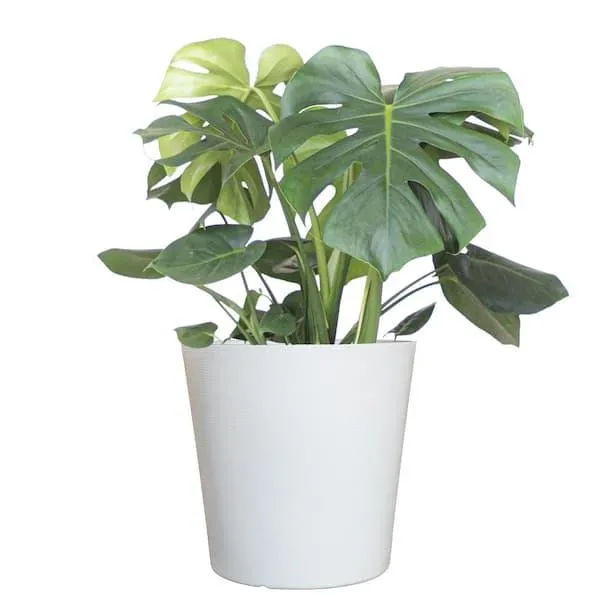A Guide to Decorating with Indoor Plants
Bringing plants indoors is a great way to add natural beauty and life to your home. Whether you have a black thumb or a green one, here are some tips for using plants to decore style and comfort. From my experience decorating with plants, the key is finding the right plant for each spot.
Choosing Low-Maintenance Plants
When starting out, select plants that are fairly foolproof and low-maintenance. As a novice plant parent, I learned the hard way that some tropicals need exacting care. Basically, if you forget to water it you’ll come home to a crispy critter. The following options are more chill:
- Pothos – This trailing vine can go weeks without water and survives low light. You sort of can’t kill it, kind of it’s ideal for areas you’ll neglect.
- Spider plant – With sword-shaped leaves in variegated colors, spider plants thrive on neglect. They’re super easy to propagate too, so you’ll have babies to share.
- Zz plant – Known as the “hardy rubber plant,” zz plants can go forever between waterings. Win!
Boosting Humidity with Tropicals
If your home tends to be very dry in winter, some tropical beauties like philodendrons, monsteras, and ferns will perk up with a humidity boost. Here are some options:
- Pebble trays – Fill shallow trays with pebbles and water, then place potted plants on top. The evaporation adds moisture to the air.
- Hydroponic gardens – Self-watering systems like Lechuza pon keep plants hydrated with wicks. The reservoir provides humidity too.
- Humidifiers – Cool mist models are best for plants since hot steam can burn leaves. Run it nearby to up the humidity.
Just be sure to choose plants that reasonably match your climate. For instance, as much as I dig orchids they require very specific care. So unless you’re fully committed it’s sort of not worth the stress, as I’ve learned from past experiences!

Placing Plants Strategically
Now that you’ve selected low-maintenance beauties, it’s time to strategically place them throughout your home. The right plant can totally transform a space from drab to fab:
- Entries – Greeting plants like palms or pathos trailing over walls welcome guests.
- Tables – Small plants or pots of herbs on coffee and side tables add visual appeal.
- Windowsills – Use trailing vines, succulents, or terra cotta pots of flowers near light sources.
Plants also improve air quality and reduce indoor pollutants. English ivy, bamboo palm, and peace lilies are natural air purifiers. Place them in bedrooms, living rooms, and other living areas people congregate in. At the same time, steer clear of placing plants where pets or children have easy access, since some species can be toxic if ingested.
Caring for Your Plant Pal
As with all friendships, caring plant relationships require TLC:
- Water – Check soil moisture with your finger and only water when dry 1-2 inches deep. Overwatering can cause root rot.
- Light – Consider your home’s lighting and place plants in appropriate spots. Many tolerate low light but some jungle dwellers demand much brightness.
- Fertilizer – Use a balanced, water soluble houseplant fertilizer diluted to package directions in spring and summer.
- Pruning – Trim off any dead, diseased, or damaged growth to promote new growth. Propagate cuttings for extra plants!
- Repotting – Transplant to a slightly larger container when roots emerge from drainage holes.
With some TLC, your new plant pals and ornamental accents will reward you with vibrancy for years to come. Besides supplying beauty, certain plants may even help improve moods and counter seasonal affective disorder, according to research. Whether you go full jungle vibes or modestly green up your space, the right indoor plant can enhance your living space and overall wellbeing.

Common Plant Problems and Solutions
No matter how diligent you strive to be, issues can crop up. Here are some typical plant maladies and their remedies:
- Leaf drop: Under- or overwatering stresses plants. Adjust your schedule and check drainage/pot size suitability.
- Yellowing leaves: Could be too much or too little water, drought, over-fertilizing, pests or disease. Check soil/care routines.
- Brown leaf tips: Often from hard water, under-watering then over-watering, or temperature fluctuations near a draft or heat source. Move plant.
- Mealybugs/aphids: Cottony or insect-like pests suck plant juices. Treat with insecticidal soap or neem oil spray applied as directed.
- Scale: Hard, shieldlike bumps secrete sticky honeydew. Rub off with cotton ball soaked in rubbing alcohol.
With some observation and adjusting, hopefully you can get those plants thriving once again. As any green thumb knows, growing Flora isn’t magic. It takes nurturing skills to raise happy houseplants! So keep at it.
Adding a splash of greenery to your surroundings brings beauty, nature indoors, and even some mood-boosting benefits. With a little care and know-how, plants can enhance your living space while staying worry-free. After all, you deserve a spot of leafy joy too. What kind of plants will you grow?
Factors to Consider When Choosing Decor Plants
| Plant | Light Requirements | Water Needs | Size | Care Level |
|---|---|---|---|---|
| English Ivy | Medium light | Allow soil to partially dry between waterings | Trailing vines up to 10 feet | Low |
| Spider Plant | Bright, indirect light | Allow soil to partially dry between waterings | Up to 2 feet tall and wide | Low |
| Snake Plant | Low light | Let soil dry out between waterings | Up to 3 feet tall | Very low |
| Chinese Evergreen | Medium light | Keep soil moist | Up to 5 feet tall and wide | Low |
| Philodendron | Bright, indirect light | Allow top inch of soil to dry between waterings | Vining up to 10 feet | Low |
FAQ
-
Why are indoor plants good to have?
Indoor plants can basically help improve air quality and reduce stress. Their leaves absorb toxins like benzene and formaldehyde that are emitted from things like cleaning products and pressed wood. Having some green plants growing around the home can sort of make you feel more relaxed.

-
What kinds of plants do well indoors?
Amazingly, a lot of plant varieties can thrive inside your home with the right care. Peace lilies, pothos, snake plants and Chinese evergreens are known to be pretty tolerant of low light. Spider plants, philodendrons and orchids also appear to grow well indoors. Ferns and aloe vera may need a bit more light.
-
How often should indoor plants be watered?
The frequency of watering indoor plants depends on a bunch of factors like the size of the plant, type of soil, and temperature. As a basic rule, check the soil before watering – it should be slightly dry to the touch. “Is the soil still damp? Then hold off on watering for now,” you might say. Always err on the side of under-watering rather than over-watering.
-
What are some tips for caring for indoor plants?
To keep your greenery healthy and lush, make sure to provide adequate lighting – whether…natural or artificial. Feed them occasionally during the growing season using a balanced houseplant fertilizer. Remove any wilted or spotted leaves. Re-pot plants that have outgrown their containers. And watch out for pests – a dilute neem oil spray can help prevent issues.
-
Is it difficult to care for indoor plants?
Caring for indoor plants isn’t as hard as some folks think. As long as you follow the basics of light, water, fertilizer and pruning, many species are low maintenance. “I mean, how difficult can it be to give them a drink every so often?” you might joke. The trick is finding plants that match your care skills. Spider plants and pothos are known to be pretty tough – perfect for novice green thumbs!

What are the benefits of keeping plants in an office?
Studies show indoor plants not only enhance mood and reduce stress, but can also increase productivity at work. According to experts, just having potted plants nearby can help you focus better and stay more alert throughout the day. The added greenery has also been shown to lower sick day usage. So in summary, a little desk decoration goes a long way in making your workspace more enjoyable. What do you think, worth trying?
Do plants remove toxins from the air?
While it’s true plants can absorb certain pollutants through their leaves, they won’t completely clean the air all on their own. Stronger contaminants like cigarette smoke or chemical vapors need proper ventilation to fully clear out. Green plants may take the edge off milder indoor toxins from things like new furniture or cleaning products – but by no means are they a replacement for opening some windows now and then! All the same, a few pals around the office can’t hurt.
